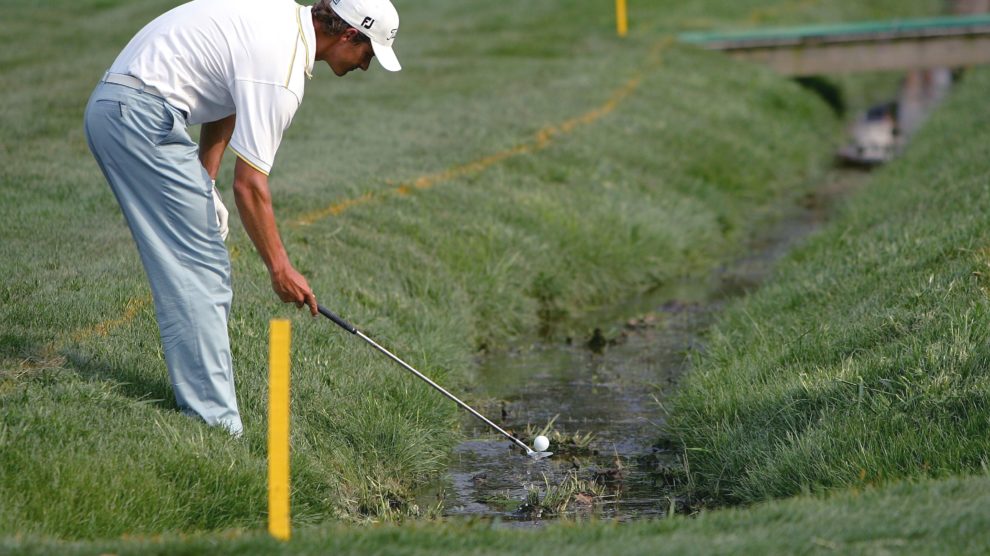For the vast majority of golfers, going for the green in two on a par 5 -- and even many par 4s -- is not a guaranteed option. That's for a variety of reasons.
Lots of golfers just don't hit the ball well enough, often enough -- or long enough -- to get to each green in two, particularly for par 5s. Either they don't hit it long enough or straight enough to get home in two shots. That means millions of golfers have to consider laying up on several holes on the golf course.
For most golfers, particularly older players, they've long been taught that they should figure out how to lay up to a full shot distance. If you hit your 9-iron 120 yards, then calculate your lay up shot distance to get to that figure -- or a full pitching wedge, and so forth.
Laying up can be an anxiety-inducing shot for a player, though, because it's almost as though they're trying to hit into a par 3 to a perfect distance so that the next shot is easier. Think about it like this: If you're a golfer that has a hard time hitting it flush and straight off the tee, you probably also have problems hitting approach shots, so why is laying up a good idea?
In reality, statistically speaking, the best lay up is, frankly, not laying up at all. Every piece of shot data we have from practically every skill level of golfer tells us that golfers generally score lower the closer they are to the hole. That's not universally true, and there are some notable differences in scoring between being in the fairway versus the rough. However, for most golfers, the advantage at which being farther back and in the fairway compared to being in the rough and closer to the hole zeroes out quite quickly -- usually within 15 yards.
In other words, a golfer generally should want to get as close to the hole as they can when they lay up.
Of course, sometimes there are scary things in the way, like water hazards and bunkers and waste areas and the like. As a golfer, you have to take those types of obstacles into consideration when laying up. If you don't feel confident that you can clear a hazard or a bunker, hit a club that you know will keep you comfortably short of it -- even if you pure one. Or, conversely, take the longest club you can confidently hit over that primary obstacle. Hazards bring penalty strokes into play, and, for many golfers, fairway bunkers may as well be a penalty area, so those are things worth avoiding to take a potentially bigger score out of the equation.
Being able to manage your scoring approach against your skill and emotions is the crux of golf. The best golfers are the ones can figure out how to manage your weaknesses -- however many there are -- and still score well to their skill level. Laying up is a key part of that, so assess each situation properly and play with confidence in your decisions.

